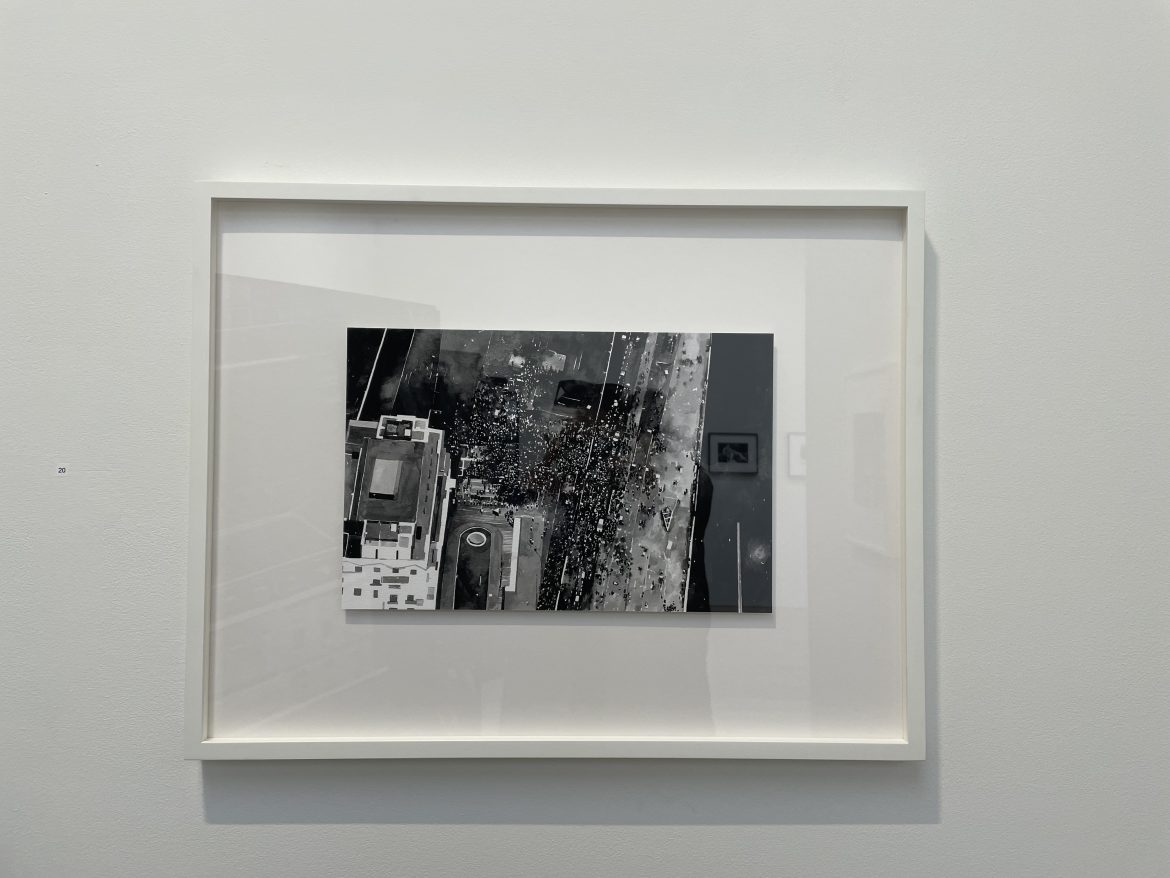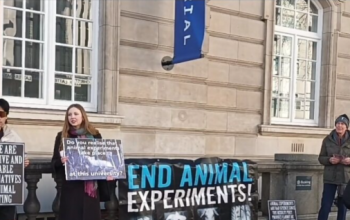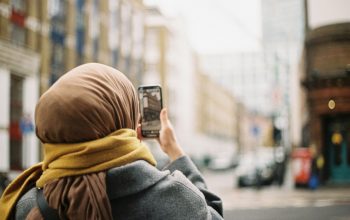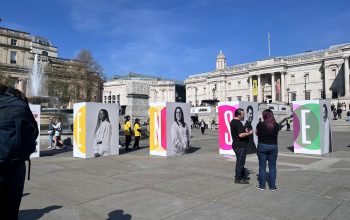The usual glamour of an exhibition at a Pall Mall gallery is obscured by scaffolding and the sound of builders scoffing bacon rolls. This is not the image the Cristea Roberts Gallery pays extortionate rent prices to present. Yet, the imperfection outside helped show Joy Gerrard and Dame Paula Rego’s artwork for what it is – a glimpse into the flawed reality of gender inequality.
The gallery should have dropped the charade of pristine white walls and embraced the damaged society that Image and Protest represents through ink paintings and etchings. Gerrard depicts crowds marching on US streets against the repeal of Roe v Wade and London protests for women’s rights. In contrast, Rego shares private protests of women undergoing illegal abortions. Her collection was conceived over 20 years ago to campaign for the legislation of abortion in Portugal and has been revived with new prints to join the fight for equality again.
At a time when society seems to have regressed in terms of women’s rights, it is clear the world is flawed. As well as abortion rights, the gender pay gap still exists, but women continue protesting. Both artists have conveyed this as best they can in a space that prefers to hide ugliness instead of facing it.
Joy Gerrard draws protesting crowds across the world
Gerrard is no stranger to protest and has represented it in her practice using pen and ink since she broke onto the scene in 2009. This time she has chosen black Japanese ink to make monochrome pieces. The medium is notoriously difficult to control but Gerrard manages it perfectly while maintaining the disruption expected from such a fluid medium. She even uses it for finer details – the words ‘Keep Abortions Legal’ are legible from the crowds of faceless figures marching across Brooklyn in Our Abortions.
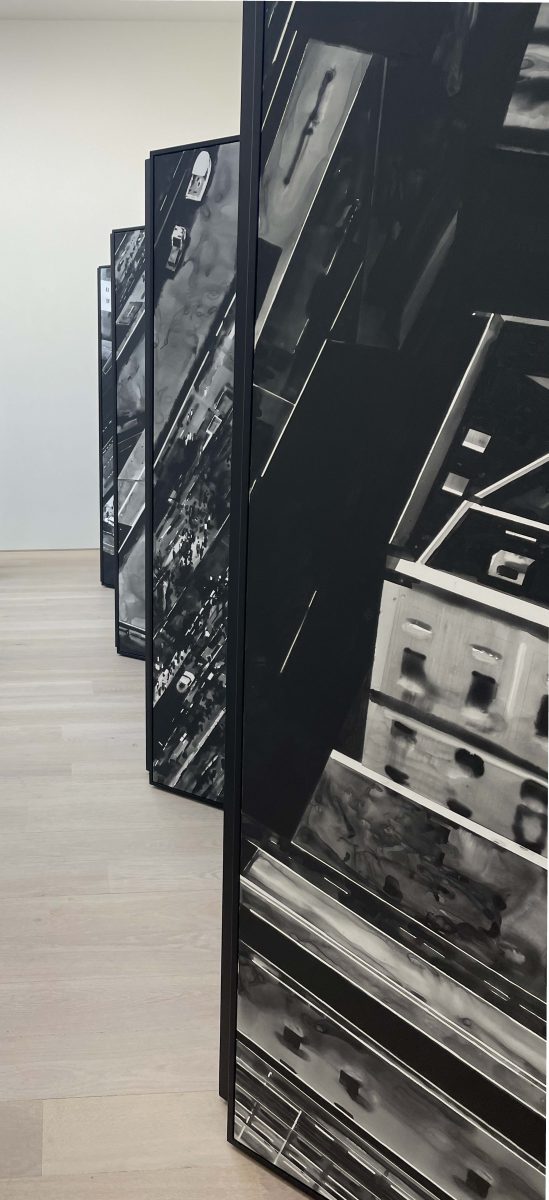
Photo: Kate Davies
Nevertheless, text is not the most captivating element. It is the crowds that dominate the piece. Even landmarks seem small in comparison to the people which only emphasises their power. Women of all ages and backgrounds attended the protest but Gerrard shows them as one. It seems they represent every woman because that is who was affected when the US Supreme Court repealed Roe v Wade and ended abortion rights in America. The ruling told the world men could control women’s bodies again, but Gerrard captured women leading themselves.
Gerrard also plays with reflection to enlarge the crowd. I Dissent depicts Washington Square Park and the countless windows opens it outwards. You find yourself seeing your own reflection in the ink making it even more captivating. Standing in front of this piece is the closest the gallery’s bleached display of Image and Protest comes to the artists intentions.
By comparison, the 2021-piece Barrier is its biggest failure. A free-standing screen reproducing an aerial view of the Sisters Uncut protest which started at a vigil for Sarah Everard in Clapham Common and moved through London. The surveillant height perspective is chilling. It reflects a disproportionate police presence dominating protesters.
The mistake the gallery made was putting Barrier at the end of the exhibition. It is hidden in the corner and unless you are a fan of either artist you could easily walk out before seeing it. Granted it is a small exhibition and you must hate the show to not make the 250 steps to the end, but an exhibition should not rely on ease for viewers to see every piece.
Old and new pieces by Dame Paula Rego on display
The gallery did get one thing right. The step into Rego’s prints was disjointed and uncomfortable – perfect. Finally, viewers are put into a frame of mind that mirrors inequality. Where Gerrard’s inkings are open and active, Rego provides an intimate window into protest.
Rego’s etchings of women during and after an illegal abortion are such private moments you feel you should turn away but the modest linework makes it impossible. The eyes betray the fear and loneliness of women defying the law. It is unbearable to stop your eyes meeting theirs and leaving them alone again.
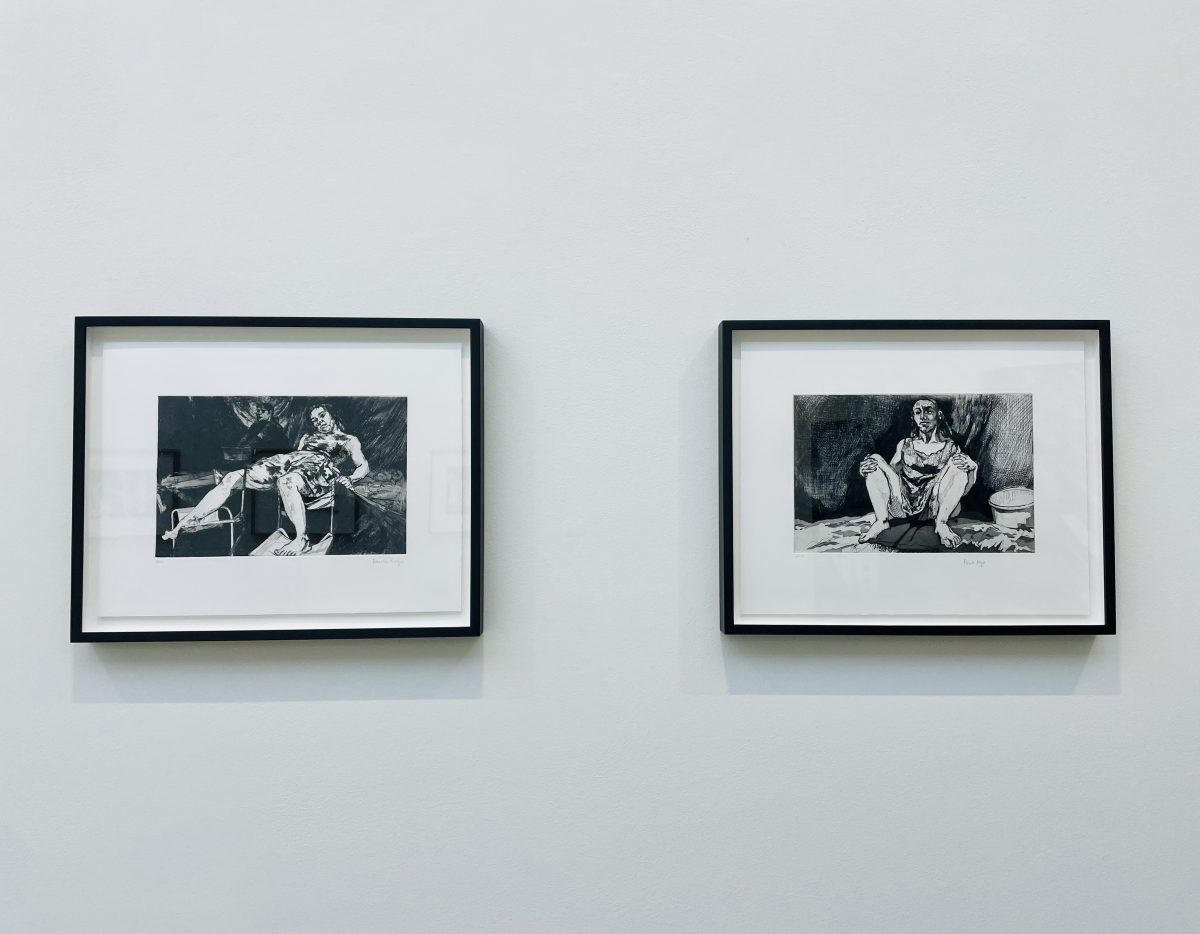
Rego’s work had undeniable influence in 2007 when it was credited with swaying public opinion to legalise abortion in Portugal. However, the world has not stayed on this progressive path, and she revived the collection to challenge inequality again. According to the gallery, Rego was “disappointed and appalled after so much suffering endured by women, abortion continued to be criminalised.” She responded with two new prints which fit seamlessly with the others. It is a shameful state of society that art that challenged a social evil decades ago is still needed today.
From unidentifiable figures to captivating faces, these artists capture a woman’s strength. Although it is small collection, it packs a punch against women’s oppression. Gerrard and Joy provided everything the gallery needed for a politically charged exhibition, but Cristea Roberts missed the mark. It reduced a deafening parade of female voices that should have shadowed even the sledgehammers outside to a mere whisper.
Image as Protest by Joy Gerrard and Paula Rego is at the Cristea Roberts Gallery until March 4.

